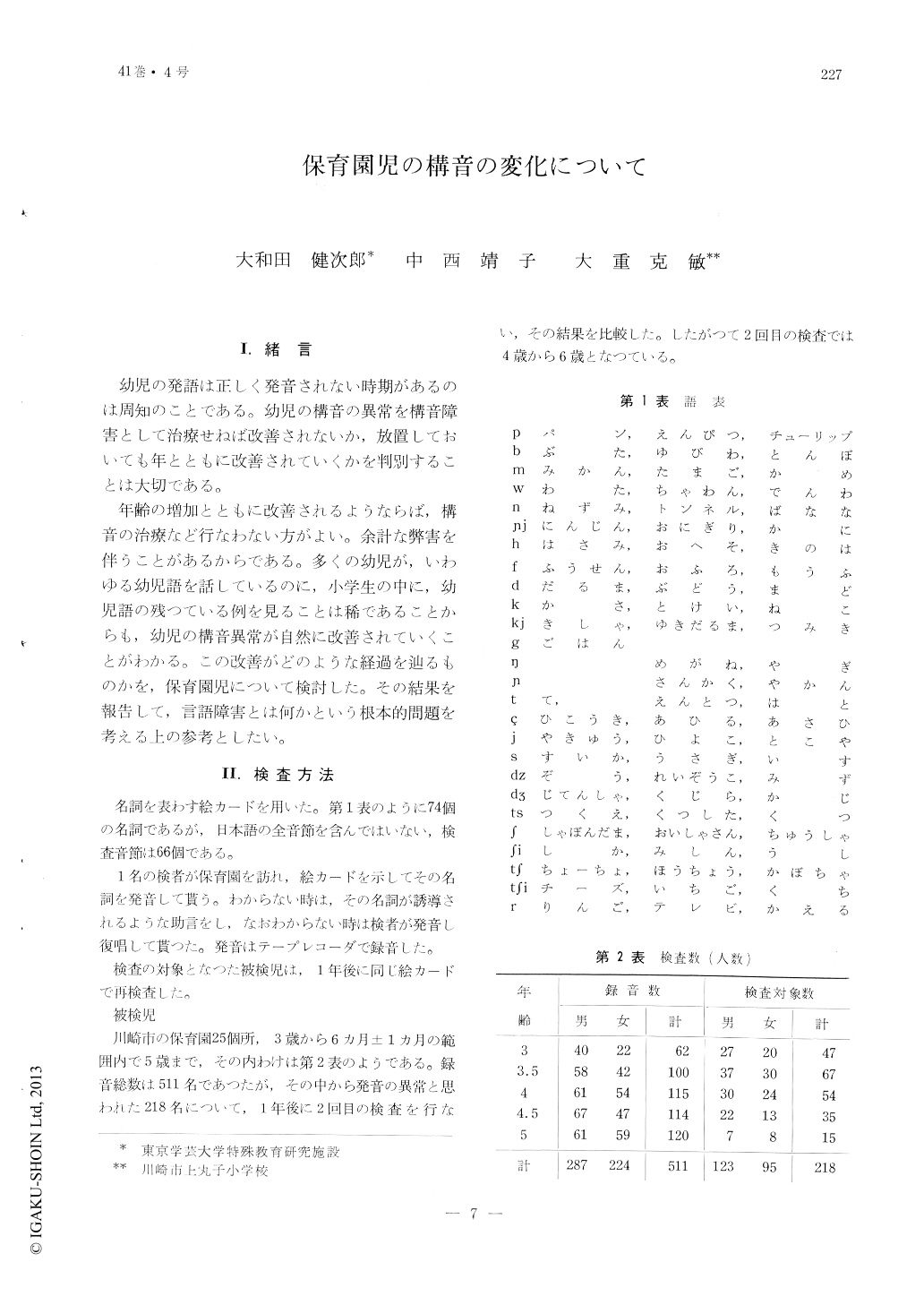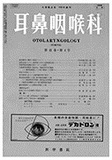Japanese
English
- 有料閲覧
- Abstract 文献概要
- 1ページ目 Look Inside
Ⅰ.緒言
幼児の発語は正しく発音されない時期があるのは周知のことである。幼児の構音の異常を構音障害として治療せねば改善されないか,放置しておいても年とともに改善されていくかを判別することは大切である。
年齢の増加とともに改善されるようならば,構音の治療など行なわない方がよい。余計な弊害を伴うことがあるからてある。多くの幼児が,いわゆる幼児語を話しているのに、小学生の中に,幼児語の残つている例を見ることは稀であることからも,幼児の構音異常が自然に改善されていくことがわかる。この改善がどのような経過を辿るものかを,保育園児について検討した。その結果を報告して,言語障害とは何かという根本的問題を考える上の参考としたい。
The articulation of speech sounds was tested on 218 children from 25 nursery schools, ages ranging from 3 to 5. Picturecard articulation test was so designed to represent 66 different speech sounds. About one year after the first test, a retest was made on the identical group to compare the results of these two tests.
About 70 percent of the erroneous sounds made in the initial test was found to be improved at the time of the retest. There was no significant difference in the rate of improvement among the different age-groups. Some of the common types of errors were pronouncing 〔tʃ〕instead of 〔ts〕, 〔dʒ〕 or 〔d〕 instead of 〔dz〕, and 〔tʃ〕 or 〔ʃ〕 instead of 〔s〕. The type oferrors that made the biggest improvement was that of plosive-plosive substitution while that of the least improvement was seen in fricative-fricative substitution. It was also observed that some syllables when arranged in different combinations were articulated differently, a fact which suggests that a great care and scrutiny must be made in selection of test words.

Copyright © 1969, Igaku-Shoin Ltd. All rights reserved.


